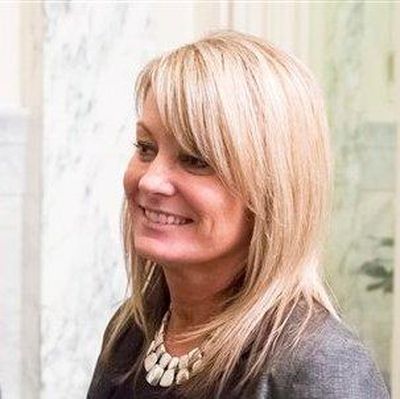Idaho approves 7 percent boost in school funding from endowment

BOISE – Idaho’s public schools will see a 7 percent boost in their payout from the state endowment next year under a plan approved unanimously by the state Land Board on Tuesday.
Another $129 million in excess investment earnings will be put into the endowment’s permanent fund to boost future years’ payouts.
“I think it’s awesome,” said state schools Superintendent Sherri Ybarra. “Any money to public schools, I’m going to be excited. I think it shows the Land Board does the due diligence in following the plan and benefiting public schools.”
She noted that payouts from the endowment to schools suffered when earnings were down during the recession, and the state struggled to make up ground it lost after then-Superintendent Tom Luna persuaded a divided Land Board in 2010 to make an extra, $22 million one-time payout to schools, but then subsequent payouts lagged as reserves were rebuilt.
“We’re healed up from that,” said Gov. Butch Otter. He described the one-time extra payout as a “leap of faith.” \
Larry Johnson, investment manager for the state endowment fund, said, “Yep – the public school fund has its full complement of reserves.”
Under the fiscal year 2019 payouts approved by the Land Board, public schools will get $50.3 million next year, up from $47 million this year. All endowments combined would get $78.2 million, up from $73.5 million this year; it’s a record high.
Idaho’s state endowment is a permanent fund, plus land holdings, that generates funds for specific state beneficiaries, the largest of which is the state’s public school system. The other beneficiaries include state universities, state hospitals for the mentally ill, state veterans homes, the Capitol building, the Idaho School for the Deaf and Blind, the state’s juvenile corrections system and its prison system.
Sen. John Gannon, D-Boise, addressed the Land Board about the proposal to transfer $129.5 million transfer to the permanent fund, saying Idaho has big funding needs to reach its goal of having 60 percent of high school graduates go on to some form of higher education. He suggested holding back about $5 million from that transfer, which is related to university endowments, and instead directing it to scholarships and offsetting state college tuition increases.
“The problem really is the cost, and we aren’t doing as good a job on that as we should,” Gannon told the Land Board, which consists of the state’s top elected officials. “So we’re all trying to find some funding and source of revenue to help this problem. I think the endowment should help more, because that was its purpose when it was set up in 1890 for the beneficiaries.”
He noted that the fund had much higher than expected earnings in the past year – 11 percent, well above the long-term goal of 4 percent a year. The balance in the fund now exceeds $2 billion for the first time; though the fund showed a loss of 0.2 percent in the previous year, its average annual gross return has been 9.5 percent over the last five years and 6.4 percent over the past 10 years.
“This isn’t exactly found money, but it’s a pleasant surprise,” Otter said.
But he noted that the Land Board can only authorize the payouts to the beneficiaries. It’s up to the beneficiaries and the Legislature to decide how the money gets spent. The Land Board can’t specify that it go to scholarships or tuition reductions.
“I think that the way we continue to manage the money in our permanent fund is for predictability,” he told Gannon. “We’ve seen what happens when we come up short – I don’t want to see that.”
Attorney General Lawrence Wasden asked Johnson for his thoughts on Gannon’s proposal. “I appreciate the intent,” Johnson said, “but I think from a practicality standpoint and a governing standpoint, it’s very difficult to ensure that monies designated by the Land Board for a specific use would actually be used for that.”
“I think the endowments are well-situated for funding of current operations,” Johnson said, because they’re “predictable, reliable.” Every dollar that goes back into the permanent fund raises future payouts by 5 cents a year in perpetuity, he said. Money in the permanent fund can never be tapped, just its earnings.
“I’m confident the current approach of reinvesting money and raising the long-term distributions is the best approach for the long-term stability of the fund.”
After the unanimous vote, Ybarra praised the direction the board is taking on the payouts. “I’m just pleased that as superintendent I’ve gotten to see some really neat things for public schools, and this certainly is an item,” she said. “I was excited to see the recommendation, and we’re happy for the kids and the schools.”
The individual endowments will see increases in their payouts next year ranging from 2.5 percent for the school of science endowment to 11.5 percent for state prisons; the average is 6.4 percent.
The proposals were recommended by the state’s Endowment Fund Investment Board, which includes an array of finance and investment experts along with two state lawmakers.